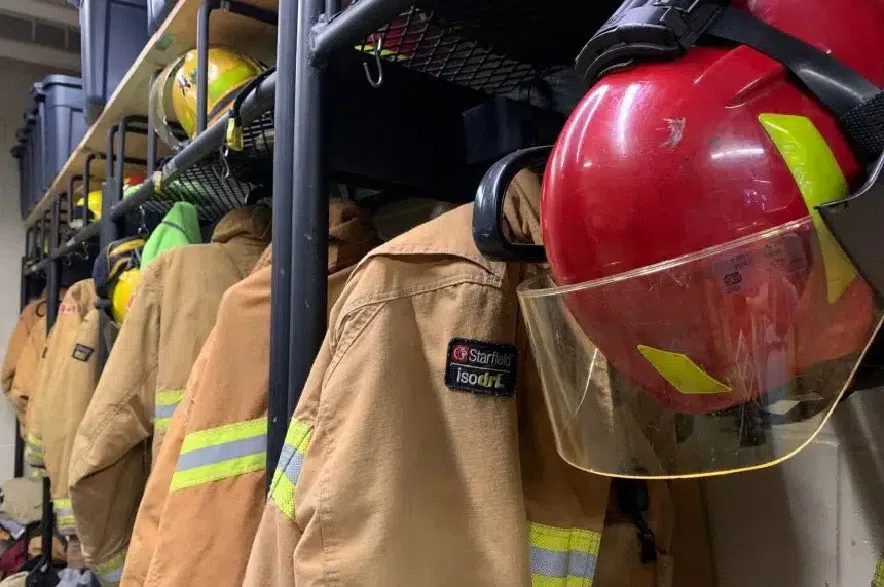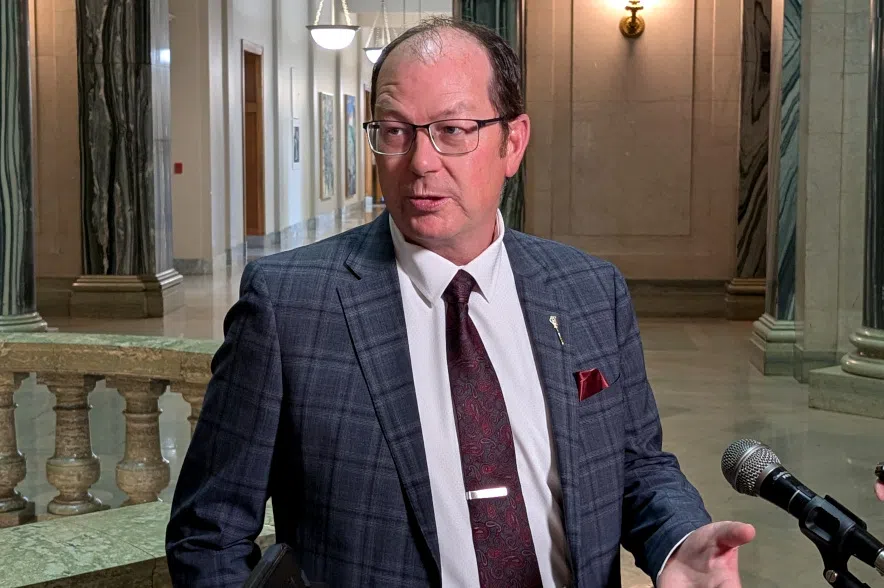After the province’s bill to allow the burning down of derelict buildings in Rural Municipalities (RM) passed its third reading on Tuesday, different reactions began coming from different parts of the province.
Blair Cummins, Reeve of the RM of Blucher, seemed cautiously positive about the bill. It would allow buildings to be burned and allow volunteer firefighters to train in a live burn situation.
Read More:
- SPSA issues fire ban for much of northern Sask. due to ‘extreme’ risk
- Any little thing could spark a grass or wildfire, Sask. fire chief warns
- Lieutenant Governor shares gifts from Sask. with King Charles at Buckingham Palace
Cummins said the RM has a lot of derelict buildings in the Elstow area after the village became insolvent. He said the RM has been dealing with them, paying about $40,000 to take them down and be hauled away, but he said some people aren’t happy about how long it’s taking.
“People have been lighting fires on these derelict properties in the middle of the night and our volunteer fire departments, of course, are the ones who respond and put these fires out,” he explained.
Cummins thinks it would be better and safer to have controlled burns during the day with the volunteer firefighters keeping an eye on it, rather than someone burning down a building in the middle of the night.
He said he spoke to the district fire chief Wednesday morning.
“They have a lot of concerns about when and how and what’s in the property … they wouldn’t mind a chance getting at these buildings before they’re burnt to practice their entrance procedures … just training to get into them, never mind burning them,” said Cummins.
He said the buildings would be checked for hazardous materials before they’re lit – that the last thing anyone wants is for a firefighter to be hurt.
Professional firefighters
The president of the Regina Professional Firefighters Local 181 is on the other side, saying there’s not a big enough benefit to a live burn for the danger it poses.
“When it comes to firefighters and training, they don’t even want us (professionals) doing live burns anymore because it’s too hard on the environment. Not only that, it’s very hard on the firefighters themselves with the carcinogens that we take in because of the live burn situation,” explained Tyler Packham.
He said there could be asbestos or lead paint in a house that would be dangerous
“It just seems like a ridiculous way just to save a few bucks, with zero consultation or zero concern for the environment or for all the firefighters and members,” said Packham.
He said there are other ways to get good training, like using smoke machines or using a film to place in their masks to simulate a smoke-filled environment.
“There’s not a big enough value of going into a burning house that you don’t know what’s in it just to get a little bit of training,” explained Packham.
Sask. NDP municipal affairs critic Jared Clarke spoke to the media alongside Packham and pointed out that many volunteer fire departments don’t have certified and up-to-date gear, so they wouldn’t be fully protected in these burns.
“We just don’t think that burning them and asking firefighters to be at the forefront of that is an appropriate response,” said Clarke.
Packham also said once a fire has burned down, it will burn for hours.
“Those house fires that have collapsed into basements will be hot for days and days and days, who’s going to watch that, who’s responsible for the fires if they get out of control?” he said.
Clarke said the bill is meant to help municipalities with derelict buildings, but that there are better ways, like eliminating dump fees for derelict buildings or compensating municipalities for the cost of demolishing these buildings.
“Volunteer firefighters are there to respond to emergencies, not to burn down derelict buildings to save the provincial government a little bit of money,” said Clarke.
Provincial government
The province’s environment minister defended the bill on Tuesday.
“This is going to allow our volunteer fire departments to have a training scenario so that their members can experience the heat and the smoke and everything else in a well-contained, safely run training scenario in their local community,” explained Minister Travis Keisig.
Keisig said the ministry had done some consultation before the bill was introduced, mostly with municipal leaders and some volunteer fire departments. But more consultations will be done this summer and fall and details will be fleshed out, like whether these derelict buildings will have to be tested for carcinogens before being burned down.
When the environment minister was asked whether the effect on the environment of burning buildings was taken into consideration in the creation of this bill, Keisig only commented that the bill is about providing a training opportunity.
“Each individual community is going to have to make that decision,” Keisig said.
Keisig wouldn’t comment on things like fire departments and the best practices for burning down buildings because, he said, he’s not a firefighter.
This bill only applies to municipalities that have an agreement with a volunteer fire department and Keisig said it’s entirely voluntary.
“There’s going to be some communities and some volunteer fire chiefs that really want to have this opportunity to provide this training scenario and there’s going to be some that have no interest — and that’s fine,” he explained.
After the consultations, Keisig said he hopes that the pilot program will be in place and burns will be able to start happening in November.
— With files from CKOM’s Erin McNutt












